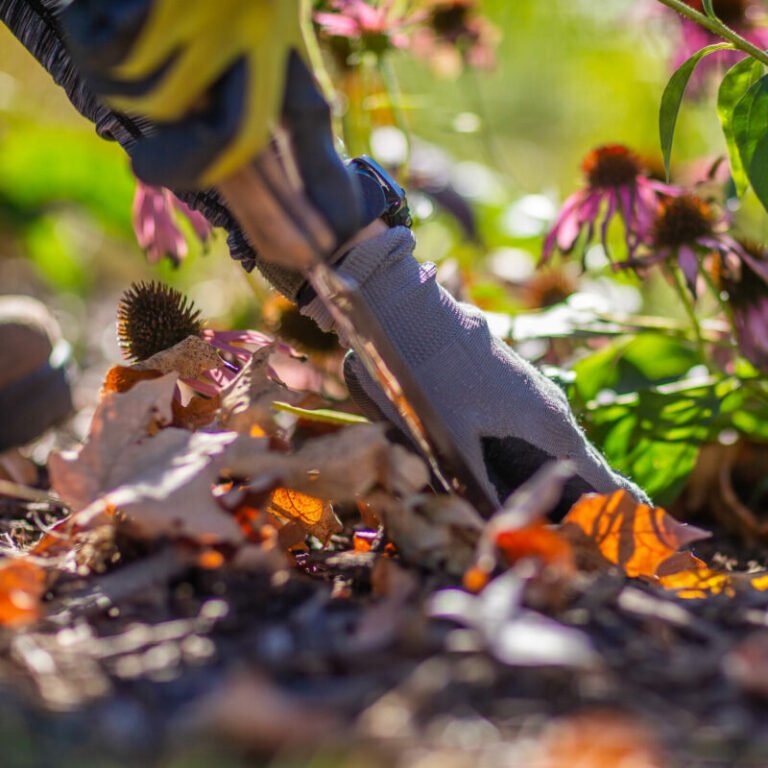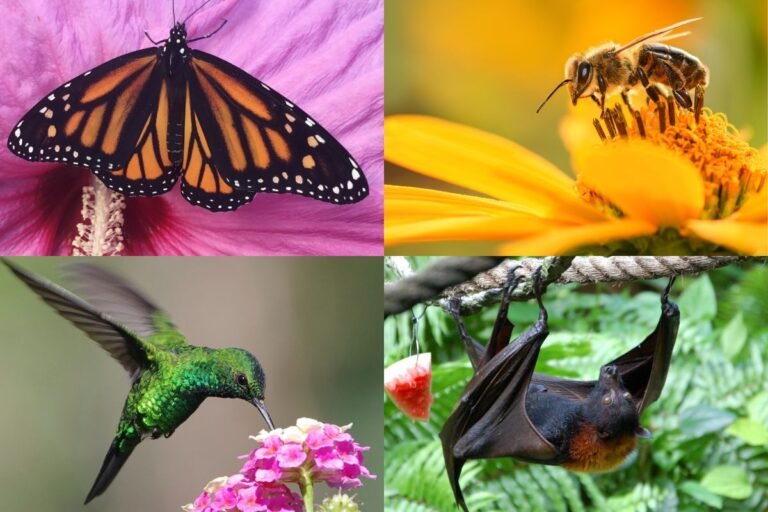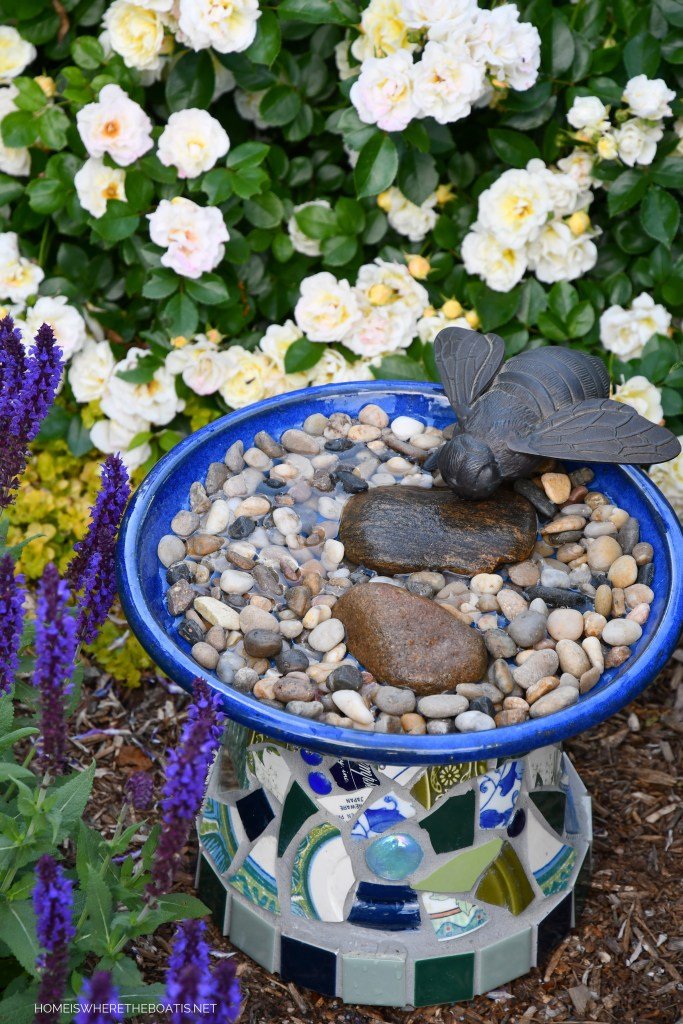Creating a thriving garden means supporting pollinators. They help plants grow and produce food.
A water source attracts these helpful creatures, but plants around it can make it even better. Pollinators, like bees and butterflies, need water to survive. They also need specific plants to feed on and thrive. Planting the right flora around your water source can create a buzzing haven for these little helpers.
This not only beautifies your garden but also supports the environment. So, which plants should you choose? The following list will guide you through the top 10 plants perfect for growing around your pollinator water source, ensuring a vibrant and lively garden. Stay tuned to discover the best options for your green space!
Importance Of Pollinator Water Sources
Pollinator water sources play a crucial role in maintaining healthy gardens. These water sources provide essential hydration for bees, butterflies, and other pollinators. Adding a pollinator water source to your garden ensures that these insects can thrive. This leads to a more vibrant and productive garden.
Supporting Local Ecosystems
Pollinator water sources support the local ecosystem. They provide hydration to bees, butterflies, and other pollinators. These insects help pollinate flowers, fruits, and vegetables. This process supports plant growth and biodiversity. A healthy pollinator population leads to a balanced ecosystem.
Attracting Diverse Pollinators
Having a water source attracts a variety of pollinators. Different species need water to survive and thrive. Bees, butterflies, and hummingbirds all benefit from a reliable water source. Attracting diverse pollinators enhances the beauty and productivity of your garden. Each species plays a unique role in pollination.
Selecting The Right Plants
Choosing the right plants for your pollinator water source is crucial. The plants you select will attract different types of pollinators. Some plants do well in sunny areas, while others thrive in shade. Understanding your local climate and soil is key to making the best choices.
Climate Considerations
Your local climate greatly influences plant growth. Plants that grow well in one region may not do well in another. In warmer climates, choose drought-tolerant plants. They can handle high temperatures and less water. In cooler climates, select plants that can withstand frost. Native plants are often the best choice. They are adapted to local conditions and support local wildlife.
Soil And Water Needs
Different plants have different soil and water requirements. Some plants prefer sandy soil, while others thrive in clay. Test your soil to understand its type and nutrient content. This helps in selecting plants that will grow best in your garden. Water requirements also vary. Some plants need a lot of water, while others do well with little. Group plants with similar water needs together. This makes watering easier and more efficient.
Lavender
Lavender is a beautiful, fragrant plant known for its striking purple flowers. Its calming scent and vibrant color make it a popular choice for gardens. Lavender also serves as an excellent plant around pollinator water sources.
Benefits For Pollinators
Lavender attracts a variety of pollinators, including bees, butterflies, and hummingbirds. Its flowers are rich in nectar, providing essential food for these creatures. Lavender blooms for a long period, ensuring a consistent food source. The plant’s strong scent also helps in guiding pollinators to your garden.
Planting Tips
Lavender thrives in well-drained soil and full sunlight. Choose a spot that gets at least six hours of sunlight daily. Plant lavender in slightly alkaline soil for best results. Space the plants 12-18 inches apart to allow for air circulation. Water lavender deeply but infrequently. Let the soil dry out between watering sessions. Prune lavender regularly to encourage healthy growth and more blooms.
Bee Balm
Bee Balm, also known as Monarda, is a vibrant and versatile plant. It is known for attracting pollinators like bees and butterflies. Its colorful blooms and fragrant leaves make it a garden favorite. Adding Bee Balm around your pollinator water source enhances the beauty and biodiversity of your garden.
Attracting Bees And Butterflies
Bee Balm’s bright, tubular flowers are a magnet for bees. The nectar-rich blooms also attract butterflies. The plant provides essential food sources for these pollinators. Bees and butterflies help with plant pollination, ensuring a healthy garden ecosystem.
Care And Maintenance
Bee Balm is relatively easy to care for. It thrives in full sun to partial shade. Water the plant regularly, but avoid waterlogging. Ensure the soil is well-draining. Prune the plant after flowering to encourage new growth. Divide the plant every few years to maintain its vigor.
Sunflowers
Sunflowers are not just beautiful. They play a vital role in supporting pollinators. Their large, bright blooms attract a variety of pollinators. This makes them an excellent choice for planting around your pollinator water source.
Providing Food And Shelter
Sunflowers offer both food and shelter to pollinators. Their large heads are packed with nectar and pollen. These are essential food sources for bees, butterflies, and other pollinators.
In addition to food, sunflowers provide shelter. The tall stalks and broad leaves offer a safe haven. Pollinators can rest and hide from predators here. This makes your garden a welcoming environment for these crucial creatures.
Optimal Growing Conditions
Planting sunflowers is easy. They thrive in full sun and well-drained soil. Ensure they receive 6-8 hours of direct sunlight daily. Sunflowers are drought-tolerant, but regular watering helps them grow strong.
Space the seeds about 6 inches apart. This allows room for growth. Thin them to 12-18 inches apart once they sprout. This prevents overcrowding and promotes healthy plants.
Avoid over-fertilizing. Sunflowers do not need much fertilizer. Too much can lead to weak, lanky growth. Just a small amount at planting time is enough.
In summary, sunflowers are a fantastic addition to your pollinator garden. They provide essential food and shelter. They are also easy to grow with the right conditions. Your pollinators will thank you!
Coneflowers
Coneflowers attract bees and butterflies with their vibrant blooms. They thrive near water, enhancing pollinator habitats. Perfect for colorful gardens.
Coneflowers, also known as Echinacea, are a great choice for your pollinator water source. These hardy perennials are not only beautiful but also beneficial for pollinators. They feature bright, daisy-like blooms that attract bees, butterflies, and other pollinators. Coneflowers are easy to grow and thrive in a variety of conditions.Nectar-rich Blooms
Coneflowers produce large, vibrant flowers rich in nectar. Pollinators love the abundant food source. These blooms appear in summer and last through fall. This extended blooming period ensures a long-lasting supply of nectar. Bees and butterflies will keep coming back.Companion Planting
Coneflowers work well with other plants. They make great companions for lavender, black-eyed susans, and bee balm. These combinations create a diverse and inviting environment for pollinators. The mix of colors and scents attracts even more bees and butterflies. Planting coneflowers with these companions enhances the beauty of your garden. It also supports a thriving pollinator ecosystem. “`Milkweed
Milkweed is an essential plant for any pollinator water source. It attracts numerous pollinators, especially butterflies. The vibrant flowers and beneficial nectar make it a favorite among gardeners.
Monarch Butterfly Habitat
Milkweed is crucial for creating a Monarch Butterfly Habitat. Monarch butterflies lay their eggs on milkweed plants. The larvae feed exclusively on milkweed leaves. This plant is vital for their survival.
There are several types of milkweed, such as Common Milkweed, Swamp Milkweed, and Butterfly Weed. Each type attracts different pollinators and adds beauty to your garden.
| Type of Milkweed | Characteristics |
|---|---|
| Common Milkweed | Large, fragrant pink blooms |
| Swamp Milkweed | Tall, pink to purple flowers |
| Butterfly Weed | Bright orange flowers |
Growth And Care
Growing milkweed is simple. Follow these steps to ensure healthy plants:
- Choose a sunny spot.
- Plant seeds in well-drained soil.
- Water regularly, but do not overwater.
- Remove invasive plants around milkweed.
Milkweed plants are hardy and can thrive in various conditions. They require minimal maintenance once established. They are also resistant to most pests and diseases.
Milkweed blooms from late spring to early fall. The flowers produce nectar that attracts bees, butterflies, and other pollinators. This makes it a critical plant for any pollinator-friendly garden.
Incorporating milkweed into your garden not only enhances its beauty but also supports local ecosystems. It provides essential resources for pollinators, ensuring their survival and success.
Salvia
Salvia, also known as sage, is a wonderful plant to grow around your pollinator water source. It is well-loved by bees, butterflies, and hummingbirds. Its vibrant flowers and fragrant leaves make it a beautiful addition to any garden. Plus, it is easy to care for and thrives in various conditions.
Long Blooming Season
Salvia boasts a long blooming season, often lasting from spring to fall. This extended period allows pollinators to enjoy its nectar-rich flowers for many months. The continuous bloom ensures that your garden remains lively and colorful throughout the growing season. For best results, deadhead spent flowers to encourage new blooms.
Tips For Thriving Growth
To help Salvia thrive, plant it in well-drained soil. It prefers full sun but can tolerate partial shade. Water regularly, especially during dry spells, but avoid overwatering. Mulching around the base can help retain moisture and keep roots cool. Prune back in early spring to promote healthy growth and a bushier plant. With proper care, Salvia will reward you with a stunning display and happy pollinators.
Yarrow
Yarrow is a versatile and resilient plant. It offers numerous benefits for your pollinator water source area. With its delicate, fern-like leaves and clusters of tiny flowers, it provides both beauty and function. Yarrow is an excellent choice for those seeking to attract and support pollinators.
Drought-resistant Qualities
Yarrow excels in dry conditions. It thrives with minimal water. This drought-resistant quality makes it ideal for areas with limited rainfall. Once established, yarrow can survive on natural precipitation. It reduces the need for constant watering, saving you time and resources. Its deep roots help stabilize soil and prevent erosion.
Encouraging Pollinator Visits
Yarrow’s blooms attract a wide range of pollinators. Bees, butterflies, and other beneficial insects are drawn to its nectar. The flat-topped flower clusters provide easy access for feeding. This plant blooms from late spring to early fall, offering a continuous food source. By planting yarrow, you create a welcoming environment for pollinators.
Zinnias
Zinnias are one of the most vibrant and popular flowers to grow around your pollinator water source. These flowers are not only easy to grow but also attract a variety of pollinators, including bees, butterflies, and hummingbirds. Their bright colors and long-lasting blooms make them a favorite among gardeners and pollinators alike.
Bright And Attractive Blooms
Zinnias are known for their bright and attractive blooms. They come in a variety of colors, including red, pink, orange, yellow, and white. This diversity in color makes them a great choice for adding visual interest to your garden. Their large, showy flowers can grow up to 4 inches in diameter, providing a bold statement in any landscape.
The blooms are not only beautiful but also long-lasting. They can bloom from early summer until the first frost, providing continuous color and nectar for pollinators. The flowers have a single, semi-double, or double bloom structure, adding to their visual appeal.
Planting And Maintenance
Planting Zinnias is straightforward. They thrive in well-drained soil and full sun. To start, sow the seeds directly in the garden after the last frost. Space the seeds about 12 inches apart to allow for proper air circulation. This helps prevent fungal diseases.
Water the seeds gently and keep the soil moist until the seeds germinate. Once the plants are established, water them deeply but infrequently to encourage deep root growth. Mulching around the plants helps retain soil moisture and control weeds.
Regular deadheading, or removing spent flowers, encourages continuous blooming. Fertilize the plants every 4-6 weeks with a balanced, water-soluble fertilizer. This promotes healthy growth and abundant blooms.
Despite their hardiness, watch for common pests like aphids and spider mites. Use insecticidal soap or a strong stream of water to control these pests. With proper care, Zinnias can be a stunning and beneficial addition to your pollinator-friendly garden.
Phlox
Phlox is a beautiful and vibrant plant that adds a burst of color to any garden. This plant is not only visually appealing but also a favorite among pollinators. With its long blooming season, it provides a continuous source of nectar for bees, butterflies, and hummingbirds.
Fragrant Flowers
Phlox flowers are known for their sweet fragrance. The scent attracts a variety of pollinators, making it an essential plant for any pollinator garden. Planting phlox near your water source can create a delightful, aromatic environment.
These flowers come in many colors, including pink, white, purple, and red. The variety of colors adds visual interest to your garden while attracting different types of pollinators.
Creating A Pollinator-friendly Environment
Phlox grows well in sunny spots with well-drained soil. This makes them easy to care for and perfect for a pollinator-friendly environment. Regular watering ensures they stay healthy and continue to produce nectar.
Planting phlox in clusters can attract more pollinators. It makes it easier for bees and butterflies to find and feed on the flowers. This clustering also enhances the visual appeal of your garden.
Including phlox in your garden supports the local ecosystem. It provides essential food for pollinators and helps increase their population. This benefits your garden and the environment.
Creating A Balanced Ecosystem
Planting the right flora around your pollinator water source creates a balanced ecosystem. Native flowers, herbs, and shrubs attract bees, butterflies, and birds. Enjoy a thriving, vibrant garden with these top 10 plants.
Creating a balanced ecosystem around your pollinator water source is essential. It helps support diverse wildlife and encourages healthy plant growth. A well-balanced garden attracts more pollinators, ensuring a thriving environment.Diverse Plant Selection
Choosing a variety of plants is crucial. Include flowers that bloom at different times. This provides nectar throughout the growing season. Native plants are ideal, as they suit local pollinators best. Mix perennials and annuals for continuous blooms.Sustainable Gardening Practices
Sustainable gardening maintains the health of your ecosystem. Use organic fertilizers and avoid chemicals. These can harm pollinators. Mulching helps retain moisture and suppress weeds. Composting enriches the soil naturally. Proper watering is also vital. Ensure your water source is clean. Dirty water can deter pollinators. Regular maintenance of your garden keeps it thriving. Prune dead plants to encourage new growth. By following these practices, your garden will flourish. It will attract a variety of pollinators, contributing to a balanced ecosystem. “`Frequently Asked Questions
What Are The Best Plants For Pollinators?
The best plants for pollinators are native species, such as milkweed, coneflowers, and lavender. These plants attract bees, butterflies, and hummingbirds. Native plants also require less maintenance and are more beneficial to local wildlife.
Why Grow Plants Around A Pollinator Water Source?
Growing plants around a pollinator water source creates a welcoming habitat. It provides food and hydration for pollinators. This encourages them to visit and thrive in your garden.
How Do I Attract More Pollinators?
To attract more pollinators, plant a variety of flowering plants. Ensure continuous blooming throughout the seasons. Provide water, shelter, and avoid using pesticides.
Which Flowers Are Most Attractive To Bees?
Flowers most attractive to bees include sunflowers, lavender, and borage. These flowers provide ample nectar and pollen. Bees are particularly drawn to blue, purple, and yellow flowers.
Conclusion
By growing these top 10 plants, you can attract more pollinators. These plants provide food and shelter, creating a thriving environment. Your garden will bloom with vibrant colors and buzzing life. Pollinators play a crucial role in our ecosystem. Enjoy watching bees, butterflies, and birds visit your water source.
Happy gardening!



